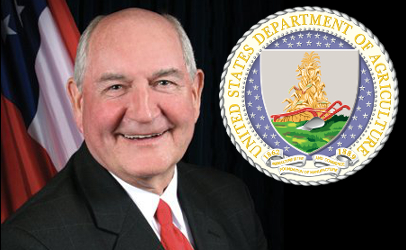
Agriculture Secretary Sonny Perdue announced says the U.S. Department of Agriculture (USDA) launched two new features on farmers.gov to help customers manage their farm loans, as well as navigate the application process for H2A visas.
“Customer service is our top priority at USDA,” he says. “These new features will help our customers as they manage their farm loans and navigate the H-2A temporary agricultural visa program. In my travels across the country, I have consistently heard people tell us to use more technology to deliver programs at USDA. As we adopt new technology, we are introducing simple yet innovative approaches to support our farmers, ranchers, producers, and foresters. After all, they support the nation every day. It’s my goal to make USDA the most effective, most efficient, most customer-focused department in the entire federal government. Farmers.gov is a big step in that direction.”
In 2018, Secretary Perdue unveiled farmers.gov, a dynamic, mobile-friendly public website combined with an authenticated portal where customers will be able to apply for programs, process transactions and manage accounts.
Navigating the H-2A Visa Process:
Focused on education and smaller owner-operators, this farmers.gov H-2A Phase I release includes an H-2A Visa Program page and interactive checklist tool. It includes application requirements, fees, forms, and a timeline built around a farmer’s hiring needs.
You may view the video at this following link: youtu.be/E-TXREaZhnI
The H-2A Visa Program – also known as the temporary agricultural workers program – helps American farmers fill employment gaps by hiring workers from other countries. The U.S. Department of Labor, U.S. Citizenship and Immigration Services, U.S. Department of State, and state workforce agencies each manage parts of the H-2A Visa Program independently, with separate websites and complex business applications.
Over the next several months, USDA will collaborate further with the U.S. Department of Labor on farmers.gov H-2A Phase II. It’s a streamlined H-2A Visa Program application form, regulations, and digital application process that moves producers seamlessly from farmers.gov website to farmers.gov portal, and then to U.S. Department of Labor’s IT systems.
Managing Farm Loans Online:
The self-service website now enables agricultural producers to view loan information, history and payments.
Customers can access the “My Financial Information” feature by desktop computer, tablet or phone. They can now view:
- loan information;
- interest payments for the current calendar year (including year-to-date interest paid for the past five years);
- loan advance and payment history;
- paid-in-full and restructured loans; and
- account alerts giving borrowers important notifications regarding their loans.
To access their information, producers will need a USDA eAuth account to login into farmers.gov. After obtaining an eAuth account, producers should visit farmers.gov and sign into the site’s authenticated portal via the “Sign In / Sign Up” link at the top right of the website.
Currently, only producers doing business as individuals can view information. Entities, such as an LLC or Trust, or producers doing business on behalf of another customer cannot access the portal at this time. However that will change in the future.
Google Chrome, Mozilla Firefox or Microsoft Edge are the recommended browsers to access the feature.
About farmers.gov:
USDA is building farmers.gov for farmers, by farmers. Future self-service features available through the farmers.gov portal will help producers find the right loan programs for their business and submit loan documents to their service center.
With feedback from customers and field employees who serve those customers, farmers.gov delivers farmer-focused features to deliver the greatest immediate value to America’s agricultural producers – helping farmers and ranchers do right, and feed everyone.

